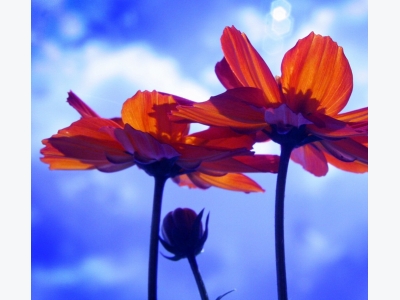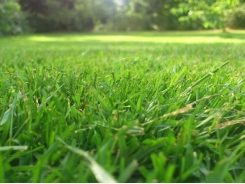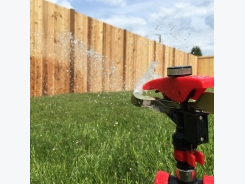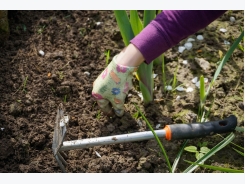Parts of a Flower

Flowers (or blooms, blossoms) are the reproductive part of flowering plants. We commonly think of flowers as the decorative plants that we grow for beauty and scent.
Many plants, however, are flowering plants (Magnoliophyta or angiosperms). Most of our common vegetables that we eat are flowers, in fact.
The actual flower (bud or blossom) has a specific purpose depending on the plant's reproductive cycle. All flowers, however, have the same basic parts that fulfill specific functions of reproduction. These four parts are in a whorl on the receptacle (the flower).
We commonly think of the corolla as the flower since these are the soft, often colorful parts of the flower that open to attract insects or animals to them to facilitate pollination through transfer of pollen. Surrounding the corolla are often-overlooked petals or coverings called the calyx (individually called sepals). These are a protective covering in some flowers, decorative in others, and even almost non-existent in others.
Smaller units, usually coming out of the stem around the sides of a central piece or at the center of the flower are called androcium which are made up of stamens. Stamen are individual units of the adnrocium that produce the male reproductive element pollen (or sperm). On some flowers, these are a central unit on males whereas the gynoecium will be on females. On self-pollinating varieties, the gynoecium will be at center and is the inner-most whorl of the flower's reproductive system.
The gynoecium consists of carpels which form a hollow ovary which produces seeds (ovules). A gynoecium often has a stigma at the top, which is a pollen receptor for receiving the male half of the germination process.
Of course, species vary widely, so the parts of the flower of a marigold are very different in appearance from the flower parts on a Christmas lily or squash.
To differentiate, scientists have come up with a way to explain the parts of the flower and the order of their prominence (position) on the flower using a formula. So a formula that looks like Ca4Co6A8-G1 may be used to indicate a specific species or family of flowers.
In the above formula, the Ca (calyx) has 4 sepals, the Co (corolla) has 6 petals, A (androcium) has 8 stamens, and there no G (gynoceium), indicating it is a male flower. Other letters might include Z (zygomorphic) and symbols may be present to represent "many" or "some" or "variable" if the variety allows for variation.
For the gardener, the flower is either a sign of beauty and the ultimate goal of their efforts or is a sign that fruits are about to appear, leading to a harvest that is their goal. Understanding the role that flowers play in the reproductive cycle for gardening is important. For the flower grower, knowing when and how these flowers will affect one another and the garden around them means knowing your garden's blooms.
For the grocery gardener, understanding that some plants, such as most squash have male and female varieties will mean knowing how to let your plants work together to produce fruits and seeds.
In all cases, flowers are beautiful. So enjoy them!
Related news
Tools

Phối trộn thức ăn chăn nuôi

Pha dung dịch thủy canh

Định mức cho tôm ăn

Phối trộn phân bón NPK

Xác định tỷ lệ tôm sống

Chuyển đổi đơn vị phân bón

Xác định công suất sục khí

Chuyển đổi đơn vị tôm

Tính diện tích nhà kính

Tính thể tích ao



 Revitalizing Cheap Plants
Revitalizing Cheap Plants  Organic Weed Control
Organic Weed Control